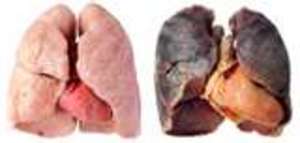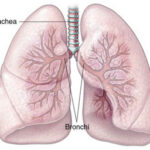Asthma and chronic obstructive pulmonary disease, or COPD, may have many similarities as far as symptoms are concerned, but they are very different conditions in terms of onset and reversibility.
What is COPD?
COPD is a term that refers to two respiratory diseases: emphysema and chronic bronchitis. As one of the leading causes of death in the United States, COPD affects millions annually. COPD is a slow, progressive disease which is characterized by airways becoming inflamed and filling with mucus. This inflammation causes less oxygen to be able to move in and out of the lungs. Sufferers often fail to recognize the symptoms until it is too late to reverse them. Heavy smokers often don’t have detectable symptoms until they are in their 40’s. The early warning signs include shortness of breath after minimal exertion, increased mucus production and chronic cough. As damage continues to occur with ongoing tobacco use, the lungs slowly lose their ability to efficiently utilize oxygen. In addition, the lungs become deficient in their ability to remove carbon dioxide.
Treatment of COPD
One essential treatment goal for slowing the decline of lung function in COPD patients is, of course, the discontinuation of tobacco use. Aside from this, other treatment objectives include relieving symptoms such as coughing and shortness of breath.
What is Asthma?
Asthma differs from COPD in that the onset usually occurs during adolescence and may have a genetic component. As with COPD, asthma is a condition characterized by restricted and swollen airways which fill with mucus, making it hard to breath. Asthma, however, is often triggered by allergies and damage to lungs can often be reversed or managed successfully with medication.
Some of the same medications may be used to treat both COPD and asthma, but the treatment goals are somewhat different. The objective for asthma patients is to be as close to symptom free as possible. Oftentimes, asthma patients can achieve near normal lung function. Inhaled steroids, short-acting bronchodialators, and long-acting beta agonists are some of the protocols currently used to treat asthma.
Asthma and COPD are both marked by airway constriction and swelling which make breathing difficult. In addition, both conditions produce some of the same symptoms such as wheezing, coughing, congestion and shortness of breath. The major difference between asthma and COPD is that COPD is almost always brought on by heavy tobacco use or prolonged exposure to toxic second hand smoke, whereas, the onset of asthma is usually in childhood and is either related to genetics or may be allergy induced. Another difference is that COPD causes irreversible lung damage and the decline in lung function can only be slowed down by treatment, but lung damage caused by asthma can be reversed in many cases and, in many cases, asthma patients live their lives free of asthma symptoms.
References:
Ruiz, Linda. “The Differences Between COPD and Asthma.” 29 January 2011 .




